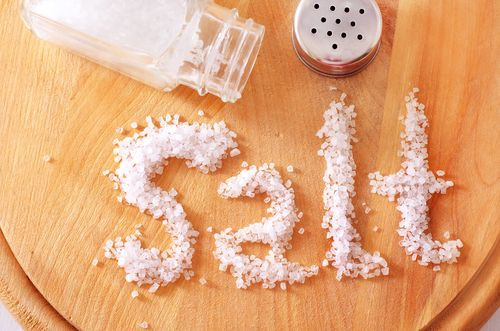Reduce Salt Intake: 5 Ways To Reduce Sodium In Your Body

Sixty-five percent of the salt Americans consume comes from supermarket foods and convenience stores. Salt is a necessary mineral for the body; it helps to retain hydration, regulate blood sugar, contributes to a healthy thyroid, and can help with better sleep. However, too many Americans consume too much salt in their diets, which can lead to a number of health issues, such as high blood pressure, stroke, and heart failure. While it’s not the only culprit of an unhealthy diet, it is important to maintain healthy levels of consumption. The surplus of advertisements in your face everywhere you turn can make it especially hard to avoid salty foods — but cutting back can do wonders for your overall health.
1. Prepare Your Own Foods:
By preparing your own foods you know exactly the amount of ingredients in the dish. Processed or prepackaged foods contain high amounts of salt that’s used to preserve them. According to the American Heart Association, “More than 75 percent of the sodium in the average American diet comes from salt added to processed foods.” When you’re preparing your own foods make sure to use small amounts of use vegetables or other products to add flavor — consume less than 2g per day.
2. Eat High-Fiber Foods:
Foods high in fiber and low in sodium help to reduce the risk of heart disease, diabetes, and obesity. Now only are they good for your digestive tract, they also help to lower hypertension and decrease the amount of water weight. “Fiber is the indigestible part of plant food that helps move food along the digestive tract, better controls blood glucose levels, and may reduce the level of cholesterol in the blood. Foods high in fiber include natural antioxidants, which reduce the risk of cardiovascular disease,” according to Cleveland Clinic.
3. Add Other Spices
Use other herbs and spices to flavor your foods. Frozen or fresh herbs like oregano, parsley, cumin, tarragon, ginger, masala, and many others can add a kick to your taste buds without the extra sodium. Also marinate your foods, which will lock in flavor and tenderize certain meats. But be careful with ready-made spice packages, as these can contain a lot of salt, so be sure to check their ingredients.
4. Do Your Research Before Eating Out
Many restaurants, for convenience, use prepackaged and processed ingredients. So before you head out for a night out on the town, check the menu or call the restaurant to see what types of ingredients they use. Look for places that have fresh ingredients or get their products from local distributors. Most fast food chains contain a high amount of salt in each dish so it’s best to avoid them.
5. Learn To Read Labels
Don’t just automatically buy the foods that say low-carb or low-fat; take a look at the back and read the ingredients. Don’t look at the percent. Look at the amount of milligrams, and in total you should consume less than 2,000 milligrams per day. Food that are listed with low sodium, by FDA standards, contain less than 140 milligrams per serving. So it’s important to be aware of portion size and to not overeat.
The good thing about salt is that you can train your body to like less of it. Foods might taste a little bland compared to what you’re used to, but stick with it, and over time your taste buds will become accustomed to less salt.
Published by Medicaldaily.com



























